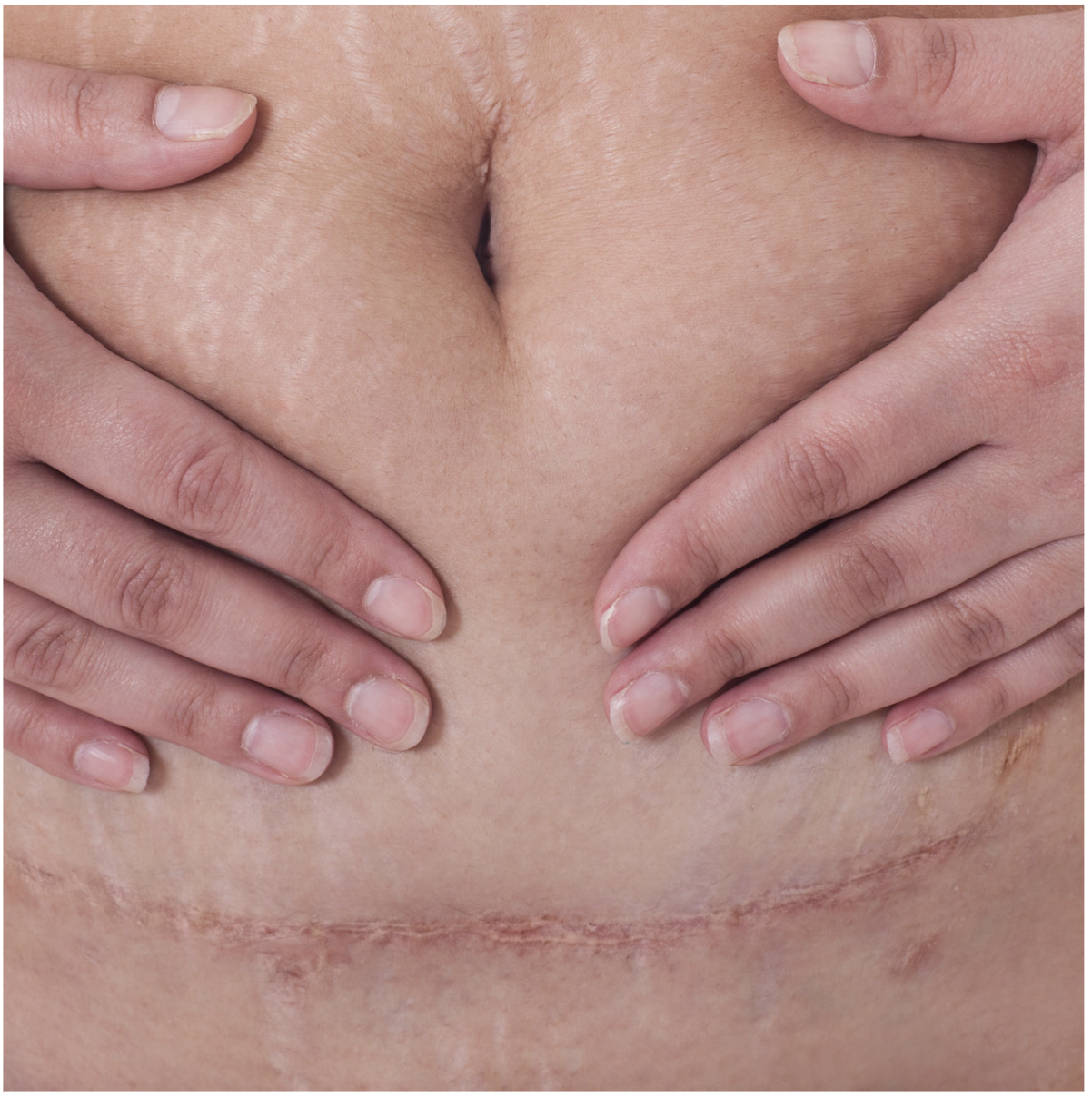Cesarean Scar Massage
C-sections are one of the most common surgical procedures done in the United States. During a c-section they cut through 7 different layers to get to the baby. For many women this can result in scar tissue. How much scar tissue forms depends on your body, the procedure performed, and genetics.
Signs you may benefit from scar massage:
pain or sensitivity at or around the scar
belly pooch or poor activation of the lower abdominal muscles
bladder pain with fullness, or bladder urgency
decreased hip mobility or tightness in the hips
Technique 1
Place your fingers on your skin and try moving in different directions to see how mobile the tissue is. You want to work into areas of resistance. Anchor one point (above or below the scar), and mobilize the other point into the area of resistance
You may find that one area of the scar is less mobile or more sensitive than the rest (adjust pressure accordingly).
Technique 2
Skin rolling is a progressed technique to work through different layers. You can do this technique in multiple directions. To get the deeper layers you can try bending your knees or supporting your lower legs on a chair to slacken the skin (allowing you to get a better grasp).
These techniques are general guidelines and not specific medical advice. If you are having pain around your scar, pain with lifting, carrying or urinary urgency, frequency or retention please see a Women’s Health Physical Therapist
Want to learn more?
Checking out our 12 week postpartum class!
It includes a module on caring for your scar through massage and cupping, as well as LIVE support from our team of Board Certified Physical Therapist to answer any questions you have!
Come see us in clinic for more specific techniques including: manual scar and abdominal massage, dry needling, and cupping. Our Pelvic PTs will combine this with specific exercises and hip mobility to get you back stronger
Follow us on instagram and facebook!



